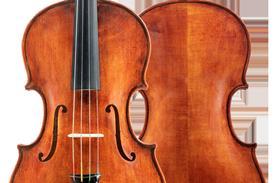- More from navigation items
- Home
- News
- For Subscribers
- Student Hub
- Playing Hub
- Podcast
- Lutherie
- Magazine
- Magazine archive
- Whether you're a player, maker, teacher or enthusiast, you'll find ideas and inspiration from leading artists, teachers and luthiers in our archive which features every issue published since January 2010 - available exclusively to subscribers. View the archive.
- Jobs
- Shop
- Directory
- Contact us
- Subscribe
- Competitions
- Reviews
- Debate
- Artists
- Accessories
Baroque Instruments: Evolutionary Road

In the first of a two-part article from February 2013, Roger Hargrave traces the development of the violin from the Baroque era to modern times – and refutes some long-held beliefs in the process
If we examine both new and antique violins that have been set up in the modern style, we see a variety of bridge designs, each one finished in its own unique way. We see different fingerboards, some narrow, some wide, some rounder, some flatter. We see many different tailpieces and bass-bars. We see different neck angles. We see necks set at different heights and depths in relation to the belly edge. We see a large variety of strings. We see all these things and many more. The truth is that at a time when international violin making schools, international conferences and the internet are arguably creating a greater degree of conformity, our ideas about such details still differ considerably.
This raises the question: if we cannot agree about how a modern violin should be set up, why do we suppose that there was ever a specific set-up for Baroque violins?
Let us begin by looking at the subject of repertoire. On both new instruments and antique ones that have been set up in the modern style, musicians play anything from Monteverdi to Philip Glass. They also play pop, rock, jazz and blues…
Already subscribed? Please sign in
Subscribe to continue reading…
We’re delighted that you are enjoying our website. For a limited period, you can try an online subscription to The Strad completely free of charge.
* Issues and supplements are available as both print and digital editions. Online subscribers will only receive access to the digital versions.




























